
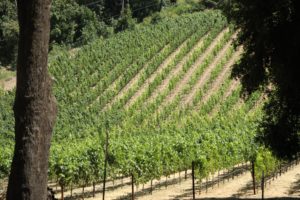
 Sylvan Lake Vineyards is located east of Napa Valley proper, perched on the eastern slopes of the Vaca mountain range overlooking Pope Valley at an elevation of between 1,600 and 1,700 feet. This property was purchased post Prohibition by George von Garden and his wife Helen. They owned nearly 1,000 acres here but over the years sold off pieces of the property. von Garden lived in Chicago and moved to Napa Valley seeking a better climate for his asthma. Helen was a prominent educator in Napa Valley. The small pond (Sylvan Lake) was already here prior to the von Garden’s ownership and was developed in the early 1900s; sylvan in Latin means forest. The von Garden’s called their property Alta Loma, which in Spanish means, tall hill.
Sylvan Lake Vineyards is located east of Napa Valley proper, perched on the eastern slopes of the Vaca mountain range overlooking Pope Valley at an elevation of between 1,600 and 1,700 feet. This property was purchased post Prohibition by George von Garden and his wife Helen. They owned nearly 1,000 acres here but over the years sold off pieces of the property. von Garden lived in Chicago and moved to Napa Valley seeking a better climate for his asthma. Helen was a prominent educator in Napa Valley. The small pond (Sylvan Lake) was already here prior to the von Garden’s ownership and was developed in the early 1900s; sylvan in Latin means forest. The von Garden’s called their property Alta Loma, which in Spanish means, tall hill.
The von Garden’s grew a diversity of fruits; according to an article listing all the winners of the Napa County Fair in The St. Helena Star dated Friday August 25, 1939, von Garden won numerous first place honors that year for his agricultural products including figs, apples and winter bananas. And he also grew Christmas trees; an article in an edition of the Napa Valley Register from 1943 mentions he sold 10 of his Christmas trees to the the U.S. Navy to be shipped to the South Pacific at the height of World War II.
von Garden was a professional florist; according to an article dated March 7, 1957 in the Weekly Calistogan, “von Garden was known locally and throughout Northern California for his arrangements for wedding and special occasions and was also a judge at flower shows and garden displays.” He was very active in the local community including the Pope Valley Farm Center, in the 1930s serving as President of the Community Club, in the 1940s as President of the St. Helena Garden Club and later he was the President of the Napa County Tuberculosis and Health Association and an officer of the Napa County Farm Bureau.
In the early 1980s, Dr. John Fisher and his wife Luisa purchased this property. Fisher moved to Angwin from New Jersey to take a teaching position at Pacific Union College where he was a professor of modern language. His introduction to the von Garden’s was because of some swans he purchased in New Jersey and brought to Napa Valley. While looking for a home for these swans, a neighbor told him to go talk to von Garden who kept swans on Sylvan Lake.
The Fisher’s son Armin grew up on this property; he was an extremely talented violist from an early age. His talent was quickly recognized; at age 12 he was awarded a full scholarship at the Salzburg Music Festival to study at the Conservatory of Music in Vienna. The family decided to move to Austria to support his musical education.
Attending high school in Vienna was challenging; while he grew up speaking German he was not raised at home to read or write the language. One of his classes was in a language he did not know, Latin. He soon found himself attracted to the Austrian Alps to sometimes escape the rigors of high school.
He returned to California, graduated with a degree in International Relations and German from the University of California Davis. While climbing El Capitan in Yosemite with an American climber, they met a group of Italians also on the wall. They ended up climbing the second half of this dome with them; he exchanged phone numbers and they stayed in contact. When he decided to move to Italy with the intention of learning the language, he reached out to them and they helped arrange his accommodation. Armin settled in the small commune of Alagna Valsesia in northern Italy, just south of the Swiss border.
He became a mountain guide, founding his own company, Mountains and More, leading clients primarily in the Italian alps through 2020 but also guiding in remote and wonderful places around the planet. And during his professional career he was the first non-Italian to be certified in Italy’s UIAGM guiding program, a process that took longer due to the fact he did not know how to ski at the time.
Armin returned to Napa Valley in 2020 and helps oversee the vineyards at Sylvan Lake with Rosalio, an employee (formerly at Dunn Vineyards) who only understands Spanish. Armin and his father communicate with Rosalio in Italian – somehow all three men eventually understand each other.
Sylvan Lake is 30 acres of which 5 acres are planted entirely to Cabernet Sauvignon planted in three separate blocks. In 2014, father and son decided to remove some of the old and no longer bearing fruit orchards and planted a single block of two acres of Cabernet Sauvignon. Armin took classes at Napa Valley College and learned about growing grapes. He installed the trellising and row stakes himself and chose both rootstock and clone; this block is planted to Cabernet Sauvignon clone 169 on 110R rootstock.
The final two blocks were planted in 2020; despite the two blocks being so close to each other, the soils/rocks differ slightly, and as a result, both separate rootstocks and clones were chosen. One block is the See clone on 420 rootstock and the other is clone 685 on 110R. These were not the first vineyards planted – vines were originally planted here in the 1920s. In fact several of these original Zinfandel vines still grow on the property.
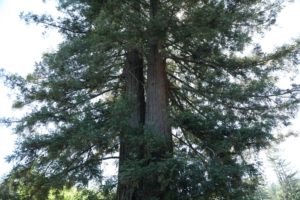

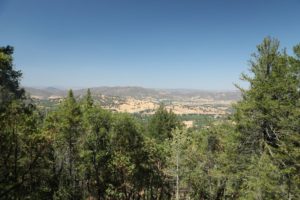 The vineyards are farmed sustainably, and solar cells power their operations.
The vineyards are farmed sustainably, and solar cells power their operations.
This property is generally frost free and is situated in a ‘banana belt’. Three varieties of avocados, a guava, and citrus trees do well here. And some of the trees that von Garden planted are still thriving including two giant redwoods and an sizable still bearing fig tree. Remnants of when the Wappo Indians moved through here can still be seen including cooking spaces drilled into rocks, part of an outcrop perched on one side of the property affording expansive views to the east and overlooking Pope Valley. Part of the reason the Wappo’s spent time on this property is because several springs are located in the area including one at Sylvan Lake which continuously flows throughout the year.
Winemaker for Sylvan Lake, Celia Welch specializes in consulting for premium wineries and is well known throughout the valley for her attention to detail and work with top vineyard sites. She has been making wine in the valley for more than 30 years and has consulted for select clients over the years including Scarecrow.
Born and raised in Medford, Oregon – her introduction to wine came early through her fathers’ passion for wine. He was a home winemaker and collector, and she grew up helping him make wine. Her first introduction to Napa Valley was in the 1960s during trips with her family. She graduated from UC Davis in 1982 with a degree B.S. degree in Fermentation Science at a time when a number of now prominent women winemakers were enrolled including Pam Starr and Heidi Peterson Barrett and others who work in Napa and beyond.
Continuing her education after graduating, she embarked in extensive travels through a number of wine regions including domestically in the Pacific Northwest, the east coast of the U.S and then New Zealand – finally working in Barossa Valley in Australia. She then moved to Napa Valley and worked at a number of wineries including Silverado Vineyards in 1987, was assistant winemaker at Robert Pepi Winery (now the home of Cardinale) and began her consulting career in 1992 for Staglin Family Winery.
Her focus of consulting is primarily for premium producers who own their own vineyards, rather than labels who source grapes and are generally (but not always) from hillside locations in Napa Valley. And her work has been highly recognized throughout the industry; in 2008 she was named Winemaker of the Year by Food and Wine Magazine and has been inducted into the Winemakers Hall of Fame through the organization, Women for Winesense.
Her introduction to Sylvan Lake was through a client who was purchasing grapes from the property; she recalls being highly impressed by the site during her first visit to the property. And in regard to the cherry trees growing here, while consulting for Bodega Norton in Mendoza, Argentina she remembers hearing that if cherries grow well on a particular site, so will Cabernet Sauvignon.
Select Wines
The 2022 Sylvan Lake Vineyards Cabernet Sauvignon, Howell Mountain District is 100% varietal. This wine is deep ruby in color; the bouquet offers aromas of tobacco spices, old cedar box, and an earthy or savory component that Celia noted as being similar to ‘pine duff’. The fruit is certainly present, but in union with these other scents. As the wine evolves the fruit becomes more expressive, offering aromas of plum and cherry. On the palate there are flavors of Santa Rosa plum, dark raspberry and juicy red cherry which reminded us of frequenting various U-pick farms in Brentwood, CA early in the season. This wine’s acidity is a complementing character – providing a refreshing lift to the palate. We immediately noted the plushness and textural feel of the tannins; they are present but with a soft and supple textural feel, a finessed attribute that Celia compares to the feel of one running their fingers over heavy satin. Time and time again, we often note the structure of mountain grown Napa Valley Cabernet Sauvignon far outpacing the fruit on the finish. That is not the case here – as flavor outruns texture. While this wine shows beautifully upon release, it has all the attributes to be highly age worthy. While a single barrel was produced in 2021, 2022 is their official debut release with 125 cases.
The grapes for this wine were harvested by hand, all on the same day and were then sorted prior to being de-stemmed. They were fermented on the skins for 14 days, were then pressed and the wine transferred into 60% new French oak barrels and 40% once-used. It was aged for 19 months before being bottled using a mix of coopers including from tonnellerie’s Sylvain, Orion and Saint Martin. Celia carefully and thoughtfully chooses barrels in which the staves were air-dried for 36 months prior to assemblage. She prefers the grain to be really dry. Working with one variety and a from such a small site as Sylvan Lake, she wants the nuances from the barrels to be subtle.

 She extracts appropriately but never crosses the line into over extraction, always achieving desired textural and tannin qualities. The tannins are already silky even by the end of fermentation. The barrels will continue to respect that in terms of the structure of the wine and are used to add complexity and density to the mid palate. But never any astringency. By the end of fermentation all the wine needs is time in oak, a gentle hand and judicious blending.
She extracts appropriately but never crosses the line into over extraction, always achieving desired textural and tannin qualities. The tannins are already silky even by the end of fermentation. The barrels will continue to respect that in terms of the structure of the wine and are used to add complexity and density to the mid palate. But never any astringency. By the end of fermentation all the wine needs is time in oak, a gentle hand and judicious blending.
And she selects barrels which pair well together but will declassify wine if it doesn’t fit into the desired profile. What is bottled as Sylvan Lake is blended in August and then ages in the barrels while being topped as needed with no racking until just prior to being bottled. If done right, not a lot of sediment will be left in barrels prior to bottling. Its a finished wine including color, a melding of flavors, acidity and texture and is microbial stable.
If she has paid attention during the growing season and nature has been compliant and the harvest date is right for what she is trying to create, she compares the work in the vineyard to that of a pilot who carefully lines up her approach well in advance of the runway, so that she doesn’t have to make any landing adjustments. And in winemaking, one also wants to avoid having to make corrections.
The first vintage incorporating grapes from the most recently planted blocks was in 2023.
—
Editors note: our tasting with Armin and Celia at Sylvan Lake was a really special and milestone visit for us. This was our 1,200th Napa Valley based winery, brand or tasting room that we have personally met with, tasted the wines and profiled on the Napa Wine Project since we began this significant odyssey in 2006.
The wines are sold direct to consumer via allocation to members on their mailing list. For more information visit: www.sylvanlakevineyards.com






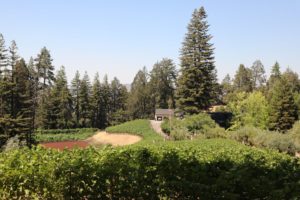
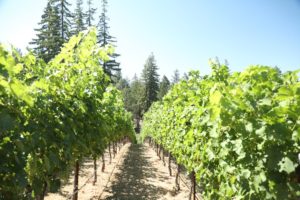
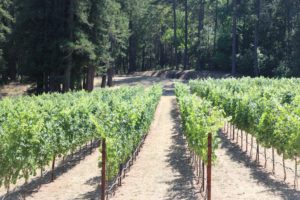
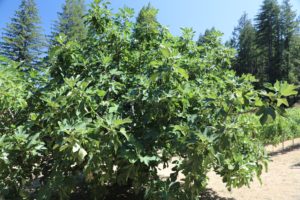
Leave a Reply